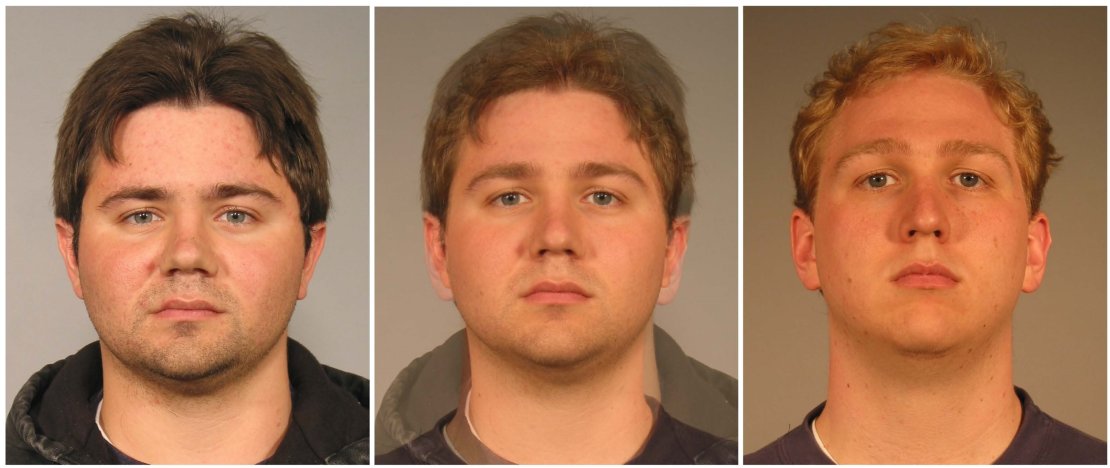Master Assignment
Creating morphed facial images using a Generative Adversarial Network
Type: Master EE/CS
Period: TBD
If you are interested please contact :
Introduction:
Let I1 be an image of Person 1 and let I2 be an image of a dierent person, Person 2. A morph of these two images is a third image M of the same size that can pass as an image of Person 1 and also as an image of Person 2. It has been shown that morphs can be created that fool both automatic facial recognition systems (AFRs) and humans. [1] See Figure 1 for an example of a morph created using this method. One possible use of such a morphed photo would be for a criminal to ask an accomplice (who doesn't have a criminal record) to apply for a passport, with which he could then travel freely.

Figure 1: The middle image shows the morph of the left and right image.
Assignment:
One way to create a morph is to use warping and blending as described in [1]. It is also so far the method most used to create morphs.[2] Only in [3] was a dierent method considered. There, a GAN was trained to reconstruct input images by encoding them into latent vectors and then decoding them. After training the network morphs were created by calculating the latent vectors z1 and z2 of the two images I1 and I2, and then decoding the interpolated latent vector zM = (z1+z2)/2 resulting in morph M.
The goal of this assignment is to improve this method by actually training the network to create morphs (as opposed to reconstructing the input images), for example by including a loss function that measures the similarity between two images. The quality of the resulting morphs can be examined by e.g. using an AFR system or by evaluating human detection.
References:
[1] M. Ferrara., A. Franco, D. Maltoni, \The magic Passport", in IEEE International Joint Conference on Biometrics. IEEE, sep 2014, pp. 1-7.
[2] A. Makrushin, A. Wolf, (2018). \An overview of recent advances inassessing and mitigating the face morphing attack." In European Signal Processing Conference (Vol. 2018-September, pp. 1017{1021). European Signal Processing Conference, EUSIPCO.
[3] N. Damer, A. Mosegui Saladie, \MorGAN: Recognition Vulnerability and Attack Detectability of Face Morphing Attacks Created by Generative Adversarial Network" BTAS 2018

